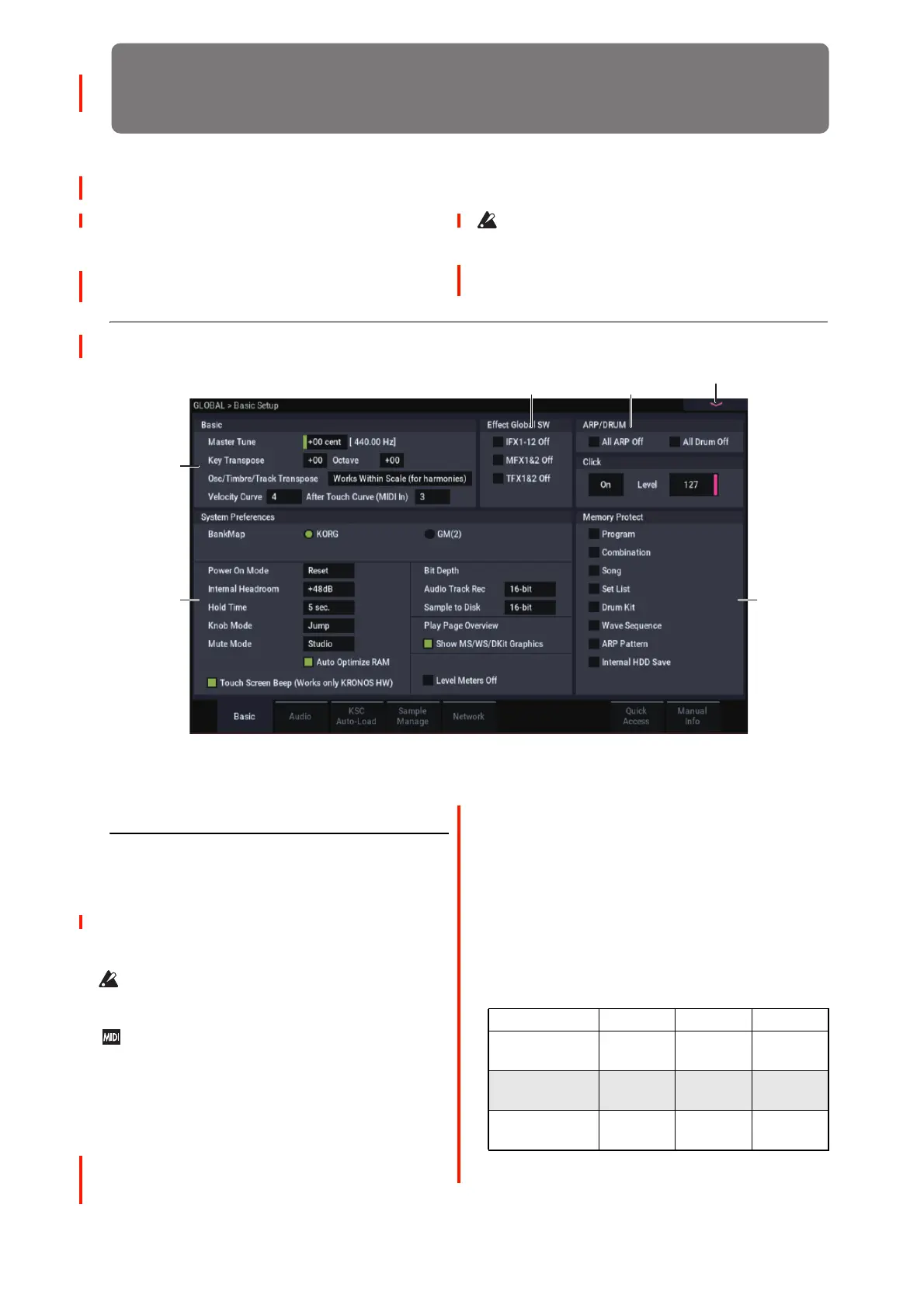631
GLOBAL mode
GLOBAL > Basic Setup
In GLOBAL mode you can make settings that affect the
entire instrument, such as master tuning, MIDI, and memory
protect.
You can also edit user scales, Drum Kits, Wave Sequences
and Arpeggio.
If you want settings made in GLOBAL mode to persist
after the power is turned off, you must write them into
memory. To do so, use the menu commands Write
Global Setting, Write Drum Kit, Write Wave
Sequence,or Write Arpeggio Patterns.
0–1: Basic
In this page you can adjust the master tuning, turn all effects
on/off, make overall system settings such as bank map and
system lock, and make memory protect settings.
0–1a: Basic
Master Tune [–50cent (427.47Hz)…
+50cent (452.89Hz)]
This adjusts the overall tuning of the entire NAUTILUS in
one-cent units, over a range of ±50 cents. (A cent is 1/100 of
a semitone.) At the default of 0, A4 = 440 Hz.
The value shown for A4’s frequency assumes that the
scale is set to Equal Temperament. If a different scale is
selected, the actual frequency of A4 may be different.
Master Tune can be controlled by the MIDI Master Fine
Tuning message, on the Global MIDI Channel. This is a
Universal System Exclusive message, with the format
(F0, 7F, nn, 04, 03, vv, mm, F7: nn=MIDI channel,
vv/mm= value).
Additionally, MIDI RPN Fine Tune messages can add to
and subtract from the pitch specified by Master
Transpose. In PROGRAM mode, this works on the
Global MIDI Channel; in COMBINATION and
SEQUENCER modes, it can be controlled separately for
each MIDI channel. For more information, see “Using
RPN (Registered Parameter Numbers)” on page 933.
Key Transpose [–12…+00…+12]
This adjusts the pitch in semitone steps over a ±1 octave
range.
Note: You can change this setting by holding down the
SHIFT button and pressing the OCTAVE +/– buttons.
Octave : –2 ... 0 ... +2
Moves the pitch of the NAUTILUS up or down, in octaves.
Note: The way that Key Transpose works is affected by the
Convert Position setting. If Convert Position is set to Pre
MIDI, Key Transpose, Octave will affect MIDI note
numbers transmitted from the NAUTILUS. For more
information, see “Convert Position” on page 650.
Note: Use the OCTAVE +/– buttons to change this setting.
0–1PMC
0–1b 0–1c
0–1a
0–1d 0–1e
Keys/Transpose –12 0 +12
61 keys
24…84
(C1…C6)
36…96
(C2…C7)
48…108
(C3…C8)
73 keys
16…88
(E0…E6)
28…100
(E1…E7)
40…112
(E2…E8)
88 keys
9…96
(A–1…C7)
21…108
(A0…C8)
33…120
(A1…C9)

